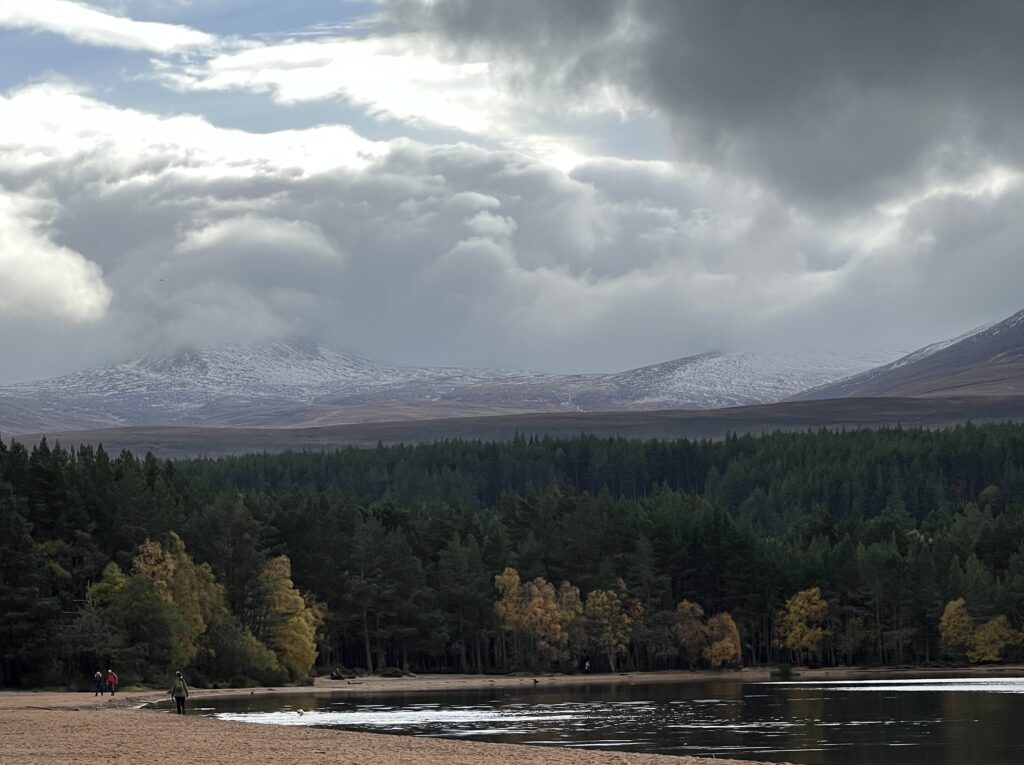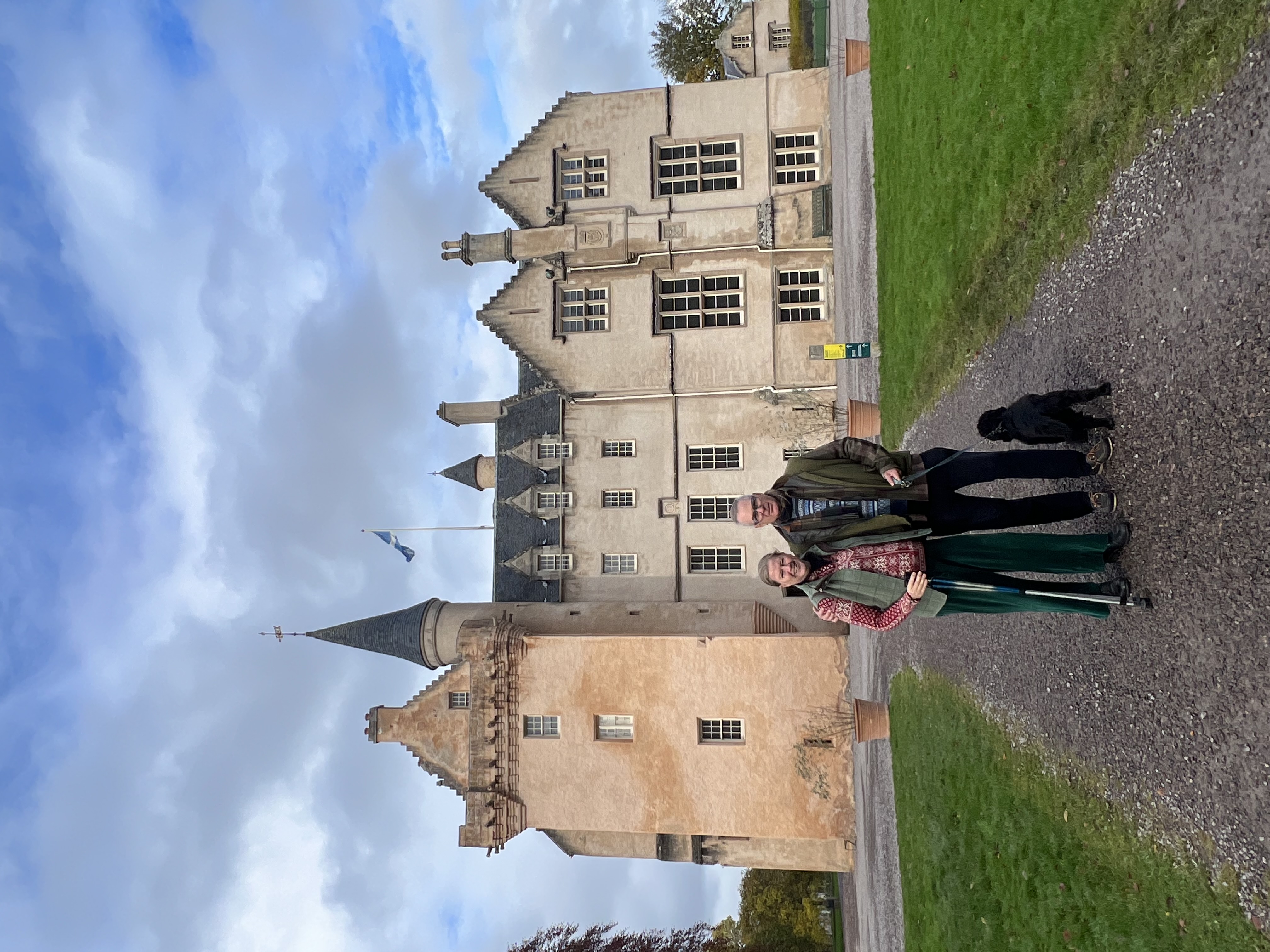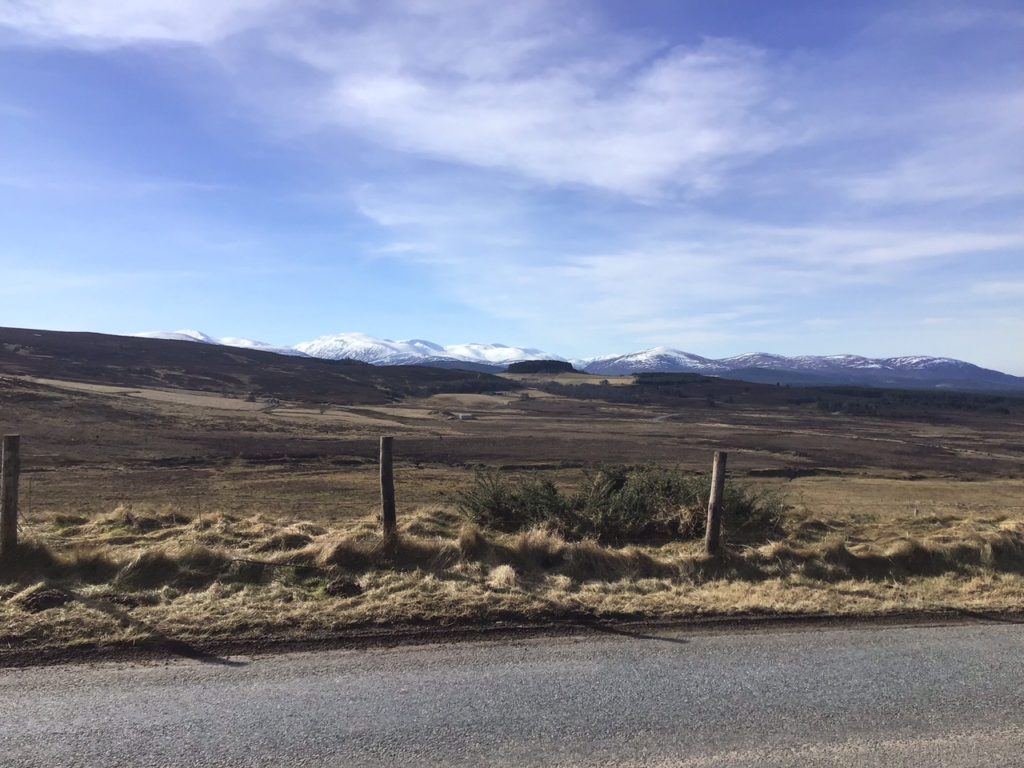I left for the Highlands tired and came back exhausted. Such is the price you pay for going on holiday with Tigger (my husband) and a young, curious Ukrainian.
We’d booked the holiday some time in advance imagining that the end of October would be quiet, a bit drizzly and the perfect opportunity to relax. Ironically, despite the best efforts of storm Babet, the region we were going to was generally dry with only a few rain showers. And with such crisp autumn days beckoning, how could we stay inside?
Scottish hospitality
A trip to Scotland is always an opportunity to catch up with relatives and we were delighted to have a chance to catch my darling uncle and aunt who live outside Glasgow.

Despite insisting that we were only coming for a cup of tea, Morag made a delicious lunch. Our visit was all too short, as the chaos caused by the storms meant we had to take a longer, scenic route along the west coast.
Home for a while
Going off season meant we had a chance to stay at our favourite hotel: The Grant Arms. Though rather grand in appearance and impeccable in service, it is warm and welcoming. Most of the guests are wildlife enthusiasts, so the vibe is very informal. Dressing for dinner means taking off your hiking boots.

Hermione spent her entire stay receiving biscuits from staff and guests alike. She was effectively the hotel dog and received her own ‘doggy’ sausages for breakfast. I doubt she will ever recover.
Into the woods
Grantown is located at the heart of the Cairngorms National Park with magnificent woodland fringing the town. My favourite is the ancient Anagach Wood (where if you are very lucky, you might spot a Capercaillie).
The following day, we made our ‘pilgrimage’ there. The walk down to the river is a short one, and I was relishing the sunshine on the turning leaves whilst Mariia was falling in love with moss. Hermione was delighting in roaming free.



Emboldened by the fact my legs were cooperating, I suggested we took an alternative route back – as they all ended at the carpark. Alas, the return journey was considerably longer and Jeff thought he might have to carry me home. With my legs completely useless, Mariia and Jeff supported me as I dragged my reluctant limbs. We made it and collapsed into the hotel – reassuring staff that I was not injured, only worn out. The lounge has never seemed so beckoning.
Time to rest
With another sunny day ahead, it seemed a terrible waste not to enjoy it. Feeling a little under the weather, I joined the others for a brief trip to Carrbridge before heading back to the hotel for a chance to recover. The others headed to Inverness and enjoyed exploring the architecturally stunning city, the Victorian market and the famous bookshop. The latter made me rather jealous, but sometimes, you just have to accept that having MS means you can’t do everything!

Image: Mariia Matrunich
This magnificent bookshop is situated in an old church and packed with second-hand treasures. Next time, I shall certainly be visiting.
Town and country
My respite proved restorative, so the next day we headed to Aviemore and beyond. The town is quite small, but well provided for in terms of amenities. From there we headed to Loch Morlich – a stunning loch that offers sandy beaches as well as woodland walks. The views across the water were breath-taking, with the mountains in the distance still frosted with snow from last winter.

When people enquire why I keep going up to the Highlands, I think this is my answer.
After reviving ourselves at the wee cafe in the woods, we set off home via Nethy Bridge. This charming, tiny village has not a great deal to offer in terms of shops, but the river and walks more than make up for it. The opportunity to walk its banks and listen to the rush of water was too good to resist.

Image: Karen Costello-McFeat
And Nethy Bridge took us past Roy Castle and the ever charming Highland Coo, Murdo with his sheep companion.


We can never resist a cow or a ruined castle.
To the sea
Wednesday we had a house viewing in Nairn. Though that was not successful, our beach walk was. Despite the squalling wind and the strand littered with pebbles and seaweed, it still looked magnificent.

We trawled the excellent charity shops and had chats with the locals. They are a friendly bunch. I even met one lady who had relocated from a small village near Eastbourne. It is indeed a small world.
Respite
After such busy days, it was time to enjoy my book and the local shops. Jeff and Mariia however, were not so easily satisfied and headed off to the local museum. Once there, they got to enjoy some dressing up in period costumes. Jeff was clearly channelling his inner Adam Ant in his.

A proper castle
Not content with just a ruin, Mariia wanted to visit a proper Scottish castle. There are any number in the area, but we settled on Brodie as it was a National Trust property and we could walk Hermione in the grounds. Like many ‘castles’, it is really a fortified house, but with a medieval heart, turrets and magnificent gardens, who were we to quibble?

Our tour guide valiantly tried to portray its many residents (who we had nicknamed the Smuglies) in the best light. But, alas, even she was unable entirely to overlook their weather vane politics that ensured they always stayed on the right side of any conflict and thus were able to keep hold of their castle and lands.
Homeward bound
The next day was our last and we had a very long journey ahead of us. Unwilling to lose an opportunity for further Highland adventures though, Jeff insisted we book tickets to see a local author we love: S G Maclean. Her talk was part of the Wee Crime Festival organised by the wonderful Bookmark bookshop. But we were still not done.
To break the journey, we stopped at The House of Bruar – the Highland equivalent of Harrods (only nicer). While Mariia pursued the sale section, Jeff and I took Hermione for a wee walk by the falls. It was a perfect place to say farewell to the region we love.
And once home, what did I do? Slept.

















































